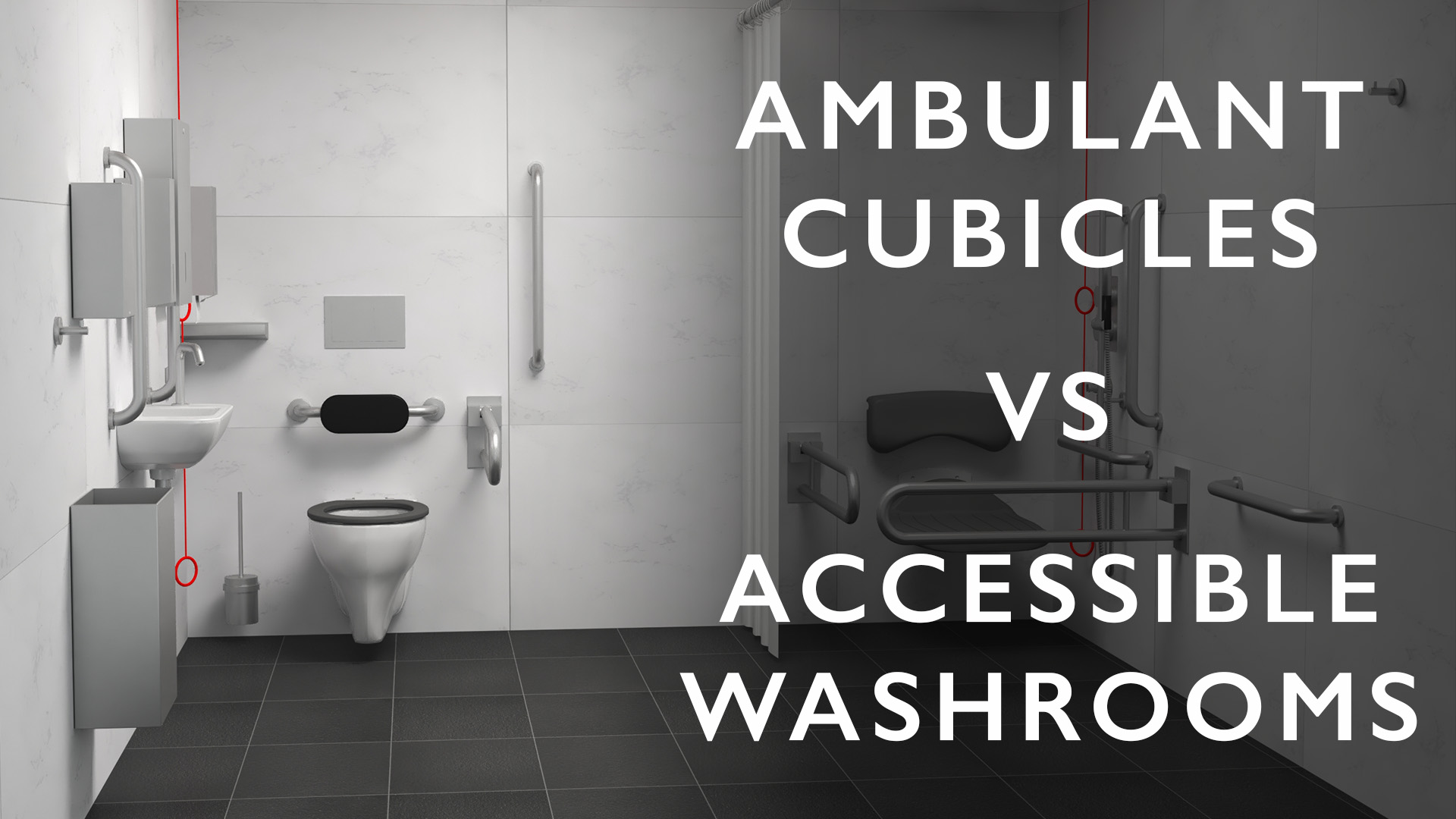30 September 2022
Reading time: 4 minutes / Updated: September 30, 2022
There are two types of accessible washroom cubicles to accommodate wheelchair users and those with limited dexterity or mobility – these are called ambulant and accessible washrooms. Sometimes there is confusion around which type of accessible cubicle must be included in a washroom design to remain compliant with regulations.
Dolphin Solutions supplies Doc M packs and Doc M sets that accommodate both types of accessible washrooms, and from our experience in helping designers with their accessible washroom needs, we can help you by explaining the difference between each type and what it means to have a compliant Doc M washroom.
In this article, we will elaborate on the difference between wheelchair-accessible and ambulant accessible washrooms, what each include, and briefly touch on accessible washroom regulations.

To learn more go to our Learning Hub or Click our Contact Page above

What is an accessible washroom?
Accessible washrooms are toilet cubicles that accommodate wheelchair users. These washrooms provide enough manoeuvring space for different preferences of wheelchair transfer to and from the WC pan.
As per BS 8300-2, wheelchair-accessible toilets generally take the form of a unisex accessible cubicle and include all the fixtures and fittings usually found in a Doc M pack.
What does an accessible washroom include?
A wheelchair-accessible washroom is essentially the same design concept as a superloo. It includes all the washroom fittings in one self-contained cubicle, such as the hand rinse basin, mirror, waste bin, tissue paper dispenser etc.
But what’s more, they include specific fittings required by law, such as an alarm pull cord, alarm reset button, and grab rails. Each fixture and fitting must conform to accessible layouts and dimensions as specified in BS 8300 and Doc M standards.
Learn more about what is included in a Doc M pack in our learning hub.

What is an ambulant accessible washroom?
Ambulant accessible toilets are primarily for users with impairments who are not necessarily wheelchair bound. This type of accessible toilet cubicle accommodates users with disabilities such as visual, hearing, physiological, functional, or mobility impairments.
Typically, ambulant toilets are similar in size to a standard toilet cubicle in traditional washrooms and include grab rails and specific dimensions for an accessible WC pan (same as a wheelchair-accessible WC).
These accessible cubicles are usually found in washrooms with separate-sex toilet cubicle arrangements, but they also take the form of enlarged unisex accessible toilets with extra fittings.
What does an ambulant cubicle include?
The fittings in an ambulant toilet are known as a Doc M set. The set includes stainless steel accessible essentials such as grab rails, a padded back rest (for cubicles with concealed cisterns), and two clothing hooks.
If the toilet cubicle accommodates a flat-topped close-coupled cistern, then the WC acts as a back rest and provides the space for a colostomy bag changing surface for standing users.
Enlarged ambulant accessible cubicles may have extra fittings such as a hand rinse basin, paper towel dispenser, mirror and shelf.
Accessible washroom regulations
Under the Equality Act 2010, all organisations have a duty to provide accessible goods and services. Whichever accessible washroom is the preferred approach, you must ensure to familiarise yourself with the various regulations and recommendations to accommodate users with different needs. There are also design and layout provisions that must be adhered to depending on the type of accessible toilet in the building.
You can find the various regulations and British standards that relate to designing an accessible washroom in:
- Document Part M – Access to and use of buildings
- BS 8300-2:2018 – Design of an accessible and inclusive built environment – Buildings. Code of practice
Washrooms should accommodate accessible or ambulant toilet cubicles because suitable sanitary accommodations should be available to everybody, including wheelchair users and people with ambulant impairments.

Which accessible toilet solution do you need?
The ideal inclusive commercial washroom design provides a choice to accommodate the variety of users and their different needs, but not all developments can have both ambulant and accessible washrooms. Perhaps there is not enough space on the floor plate, or the design includes just one accessible WC. BS8300-2:2018 Sanitary accommodation makes provision for washroom designs that may have space limitations, e.g. in small premises, and provides recommendations if there is provision for only one accessible toilet.
Typically an accessible toilet takes the form of a unisex design or an enlarged cubicle in separate-sex washrooms. However, it is preferable to have both gender-neutral and separate-sex facilities to alleviate the pressure on wheelchair-accessible provision and, at the same time, accommodate those with ambulant impairments.
Can you accommodate one or more accessible washrooms in your design?
Dolphin can help you decide which design is best to ensure you have a compliant solution for both an ambulant and accessible washrooms, but first, learn more about the Top 3 considerations when designing accessible washrooms.




